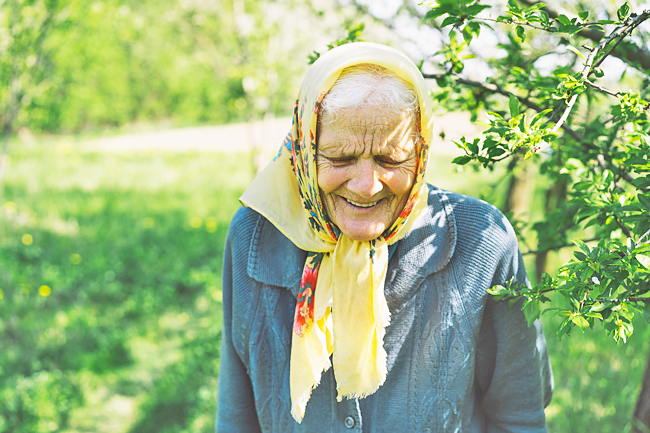Anahad O’Connor
THE WASHINGTON POST – There’s no way to guarantee that you’ll live to be 100. But we can learn a lot from studying the eating habits of the world’s centenarians.
Researchers have identified five places in the world where people have exceptionally long life expectancies – frequently living to 100 or beyond.
These areas, called “Blue Zones”, include the Nicoyan Peninsula in Costa Rica, the town of Loma Linda in California, and the islands of Okinawa in Japan, Sardinia in Italy and Ikaria in Greece.
At first glance, the diets, lifestyles and habits of people in these Blue Zones can seem quite different from one another.
Many of the long-lived people of Sardinia live in mountainous terrain, where they hunt, fish and harvest their own foods – such as goat’s milk, pecorino cheese, barley, and garden vegetables.



The long-lived people of Loma Linda are part of a tight knit Seventh Day Adventist community that shuns caffeine and alcohol and eats a largely vegetarian diet; while in Ikaria, people eat a typical Mediterranean diet with plenty of fruits and vegetables and modest amounts of meat and seafood.
Okinawans have historically consumed a largely plant-based diet. They get many of their calories from sweet potatoes, tofu, and fresh vegetables that they often pluck from their own gardens.
They also prize meat, which they traditionally save for special occasions. Nicoyan centenarians meanwhile tend to eat a traditional Mesoamerican diet rich in starchy plant foods like corn, beans and squash.
A number of factors appear to influence life expectancy. Some research suggests that genetics account for about 25 per cent of a person’s life span, with diet, environment, exercise and other lifestyle factors making up the rest. And studies show that even if you don’t start until middle age or later to make improvements to your diet, you still can add a decade or more to your life expectancy.
Diet alone is not the only factor associated with high life expectancies. Research has shown that people who reside in communities where long life is common, usually have strong connections to friends and family, a sense of purpose and a positive outlook on life.
They engage in high levels of physical activity and spend a lot of time outside gardening, farming or socialising with other people in their communities, said author of the new book The Blue Zones American Kitchen Dan Buettner.
Buettner has spent years exploring, researching and writing about the Blue Zones. He’s also analysed detailed scientific studies of their diets.
He has found that while their dietary habits are different in many ways, they share at least four common denominators. You can incorporate those principles into your own life by doing the following.
EAT A CUP OF BEANS, PEAS, OR LENTILS EVERY DAY
Legumes are especially popular among people who live in Blue Zones. Soybeans are an important part of the traditional diet in Okinawa, as are fava beans in Sardinia and black beans in Nicoya. People throughout the Blue Zones tend to eat a variety of beans and other plant foods that are rich in fiber.
Studies have found that eating a lot of fibre-rich foods promotes satiety and improves your cholesterol and blood sugar levels. It also protects against cancer and diabetes and lowers your risk of dying from heart disease or a stroke, which are two of the leading causes of death worldwide.
A study published last year in PLOS Medicine found that the average person could add years to their life by switching from a typical Western diet to a healthier diet – and that the foods that produced the biggest gains in life expectancy were beans, chickpeas, lentils and other legumes.
“Figure out how to get a cup of beans into your diet every day,” said Buettner. “Just one cup gives you half of all the daily fibre you need.”
EAT A HANDFUL OF NUTS DAILY
Nuts are rich in vitamins, fibre and minerals, and they’re a dietary staple for many Blue Zone inhabitants. Almonds for example are popular in Ikaria and Sardinia, where they’re used in many dishes, while Nicoyans love pistachios, said Buettner.
A study in JAMA Internal Medicine that tracked 31,000 Seventh Day Adventists found that those who ate nuts more than four times per week were 51 per cent less likely to suffer a heart attack and 48 per cent less likely to die of heart disease than their peers who ate nuts no more than once per week.
Grab a handful of almonds, walnuts, cashews or pistachios. For a healthy breakfast, drizzle almond butter over a bowl of plain yogurt or oatmeal. Or sprinkle some diced nuts on top of a salad or a vegetable stir fry for dinner.
EAT BREAKFAST LIKE A KING, LUNCH LIKE A PRINCE AND DINNER LIKE A PAUPER
People in the Blue Zones tend to eat most of their calories earlier in the day rather than later.
Okinawans traditionally eat a big breakfast and a moderate lunch. “They don’t even have dinner,” said Buettner.
The Seventh Day Adventists he studied would eat a big breakfast at 10am and a moderate lunch at 4pm. “And then they’re done for the day,” he said. Buettner noticed in all the Blue Zones he studied that when people did eat dinner, it would typically be in the late afternoon or early evening.
“They’re not eating late suppers, and they’re not eating a lot,” he added.
This pattern of eating aligns with our innate 24-hour clocks, or circadian rhythms, which cause our bodies to be most efficient at metabolising meals in the morning and early afternoon.
Studies show that when people are assigned to eat most of their calories early in the day, they lose more weight and have greater improvements in their blood sugar and cholesterol levels and other metabolic risk factors compared to people who eat most of their calories later in the day. They also burn more fat and experience less hunger when following an early-eating schedule.
EAT MEALS WITH YOUR FAMILY
In Blue Zones, it’s common for families to eat at least one daily meal together, typically their midday meal or their last meal of the day. While it’s understandably difficult for families who lead busy lives to eat every dinner together, it’s worth trying to do it as often as you can.
“Families that eat together tend to eat much more nutritiously, they eat slower, and there’s good research that children have fewer issues with disordered eating if they’re eating socially,” said Buettner.
Researchers have found that married couples who prioritise family meals report higher levels of marital satisfaction. Parents who routinely eat home-cooked dinners with their children consume more fruits and vegetables and their children are less likely to develop obesity.
Ultimately, while you can’t change your genes, making some diet and lifestyle changes will increase the odds that you get to celebrate a 100th birthday. The secret to longevity, as Kamada Nakazato, an Okinawan centenarian, explained to Buettner, is straightforward: “Eat your vegetables, have a positive outlook, be kind to people, and smile.”






